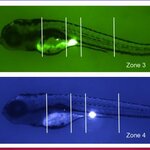Genetics & Molecular Biology

New research has discovered that NANOG, an essential gene for embryonic stem cells, also regulates cell division in stratified epithelia, which form part of the epidermis of the skin or cover the oesophagus or the vagina in developed organisms. This factor could also play a role in the formation of tumors derived from stratified epithelia of the oesophagus and skin.
Pluripotency factor NANOG is active during just two days before implantation of the embryo in the uterus, from day 5 to day 7 post-fertilization. At this critical period of development, NANOG contributes to giving embryonic stem…

A breakthrough discovery into how living cells process and respond to chemical information could help advance the development of treatments for a large number of cancers and resistant to therapy.
Researchers have unlocked the secret behind the activation of the Ras family of proteins, one of the most important components of cellular signaling networks in biology and major drivers of cancers that are among the most difficult to treat.
"Ras is a family of membrane-anchored proteins whose activation is a critical step in cellular signaling, but almost everything we know about how Ras signals…

Sequences of DNA called enhancers, which control a gene's output, find their targets long before they are activated during embryonic development, according to scientists at the European Molecular Biology Laboratory (EMBL) in Heidelberg, who write in Nature that the degree of complexity of enhancers' interactions in the 'simple' fruit fly Drosophila is comparable to what is seen in vertebrates.
"As an embryo develops, there are huge changes in transcription, much of which drives developmental progression: genes are changing from on to off, and off to on – but the contacts between enhancers…

Researchers from 13 institutions would worldwide believe they have made a breakthrough in understanding what causes autism - a clear cut case of an autism specific gene.
An analysis of 6,176 children with autism spectrum disorder, researchers found 15 had a CHD8 mutation and all these cases had similar characteristics in appearance and issues with sleep disturbance and gastrointestinal problems. How is 15 out of 6,176 a clear cut case? To find out, they went to zebra fish.
They disrupted the CHD8 gene in the fish and the fish developed large heads and wide set eyes. They then fed…

The body contains two types of fat cells, white and brown.
White fat serves to store excess calories until they're needed by the body while brown adipocytes actually burn fat by turning it into heat. Ever since it was discovered that adult humans harbor appreciable amounts of brown fat, investigators have been working to better understand its thermogenic fat-burning properties with the ultimate goal of developing novel therapies to combat obesity and diabetes.
Now, researchers have demonstrated that the transcription factor IRF4 (interferon regulatory factor 4) plays a key role in brown…
Many ancient plants weren't pretty, they didn't taste good, and they weren't big - but they could defend themselves.
As food science progressed, numerous plants were genetically optimized for better flavor and yield, but some lost their ability to produce certain defense chemicals, making them vulnerable to attack by insects and pathogens. Swiss scientists are exploring ways to help protect 21st century maize by re-arming it with its ancestral chemical weapons.
Before genetic modification, food was pretty nasty. Link: Ben Hayes on Twitter
The researchers, led by Dr. Ted Turlings…

Researchers have announced the discovery of a gene, zic-1, that enables stem cells to regrow a head after decapitation in flatworm planarians.
Many species across the animal kingdom have the ability to regenerate, but the mechanisms that connect injuries to stem cell activation and the production of new tissues are not fully understood. Developmental biologists have established that in the early embryo most animals use "tissue organizers" that secrete proteins to allow cell-cell communication for the formation of organs. But it was not clear how such tissue organizers could be produced from…

The human genome and the messages coded by 3 billion letters that determine everything from how nutrients are metabolized to how neurons communicate in the brain.
The detection and characterization of the genes present in this mass of information is a complex task that has been a source of ongoing debate since the Human Genome Project completed its first mission. It's even unclear how many genes there are.
A new paper in Human Molecular Genetics updates the number of human genes, those that can generate proteins, to 19,000 - 1,700 fewer than the genes in the most recent annotation and…

More than one quarter of children with two copies of a high-risk variant in a specific group of genes develop an early sign of celiac disease by age 5.
The findings are from The Environmental Determinants of Diabetes in Youth consortium, TEDDY, also found that participants in Sweden had higher rates of celiac disease than participants in the United States, Finland and Germany, even with the same genetic risks.
TEDDY is studying celiac disease and type 1 diabetes because both are autoimmune diseases with some of the same genetic risk factors. Celiac disease occurs in just under 1 percent of…

In 2002, President George W. Bush authorized funding for human embryonic stem cells (hESCs) using federal money for the first time - but he limited that federal funding to existing lines.
His political opponents latched onto his decision and declared that he "banned" hESCs and that he was an enemy of science, a fabrication which dogged him in the overwhelmingly Democratic-voting science community. In 2009, President Barack Obama used an executive order to slightly modify the lines federal money could fund, and his political supporters declared he "lifted the ban" on hESCs. Meanwhile, the…